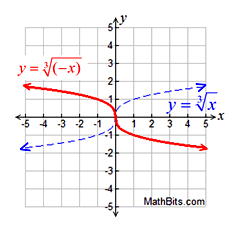
All that a shift will do is change the location of the graph. There are three if you count reflections, but reflections are just a special case of theĪ shift is a rigid translation in that it does not change the shape or size of the graph of theįunction. There are two kinds of translations that we can do to a graph of a function. Your text calls the linear function the identity function and the quadratic function the squaring
Greatest Integer Function: y = int(x) was talked about in the last section. These are the common functions you should know the graphs of at this time: Sketch a new function without having to resort to plotting points. Understanding these translations will allow us to quickly recognize and New graph as a small variation in an old one, not as a completely different graph that we have Understanding the basic graphs and the way translations apply to them, we will recognize each Graphs, we are able to obtain new graphs that still have all the properties of the old ones. There are some basic graphs that we have seen before. Mathematics presented to you without making the connection to other parts, you will 1) becomeįrustrated at math and 2) not really understand math. Which makes comprehension of mathematics possible. You can understand the foundations, then you can apply new elements to old. Part of the beauty of mathematics is that almost everything builds upon something else, and if Reflection A translation in which the graph of a function is mirrored about an axis. Scale A translation in which the size and shape of the graph of a function is changed. Let’s first work with transformations on the absolute value parent function.1.5 - Shifting, Reflecting, and Stretching Graphs 1.5 - Shifting, Reflecting, and Stretching Graphs Definitions Abscissa The x-coordinate Ordinate The y-coordinate Shift A translation in which the size and shape of a graph of a function is not changed, but Transformations of the Absolute Value Parent Function For Parent Functions and general transformations, see the Parent Graphs and Transformations section. Note: To review absolute value functions, see the Solving Absolute Value Equations and Inequalities section. Applications of Integration: Area and VolumeĪbsolute Value Transformations can be tricky, since we have two different types of problems: Transformations of the Absolute Value Parent Function Absolute Value Transformations of other Parent Functions. Exponential and Logarithmic Integration. Riemann Sums and Area by Limit Definition. Differential Equations and Slope Fields. Antiderivatives and Indefinite Integration, including Trig. 
Derivatives and Integrals of Inverse Trig Functions.Exponential and Logarithmic Differentiation.Differentials, Linear Approximation, Error Propagation.Curve Sketching, Rolle’s Theorem, Mean Value Theorem.Implicit Differentiation and Related Rates.Equation of the Tangent Line, Rates of Change.Differential Calculus Quick Study Guide.Polar Coordinates, Equations, and Graphs.Law of Sines and Cosines, and Areas of Triangles.Linear, Angular Speeds, Area of Sectors, Length of Arcs.Conics: Circles, Parabolas, Ellipses, Hyperbolas.Graphing and Finding Roots of Polynomial Functions.Graphing Rational Functions, including Asymptotes.Rational Functions, Equations, and Inequalities.Solving Systems using Reduced Row Echelon Form.The Matrix and Solving Systems with Matrices.Advanced Functions: Compositions, Even/Odd, Extrema.Solving Radical Equations and Inequalities.Solving Absolute Value Equations and Inequalities.Imaginary (Non-Real) and Complex Numbers.Solving Quadratics, Factoring, Completing Square.Introduction to Multiplying Polynomials.

Scatter Plots, Correlation, and Regression.

Algebraic Functions, including Domain and Range.Systems of Linear Equations and Word Problems.Introduction to the Graphing Display Calculator (GDC).Direct, Inverse, Joint and Combined Variation.Coordinate System, Graphing Lines, Inequalities.Types of Numbers and Algebraic Properties.Introduction to Statistics and Probability.Powers, Exponents, Radicals, Scientific Notation.







 0 kommentar(er)
0 kommentar(er)
